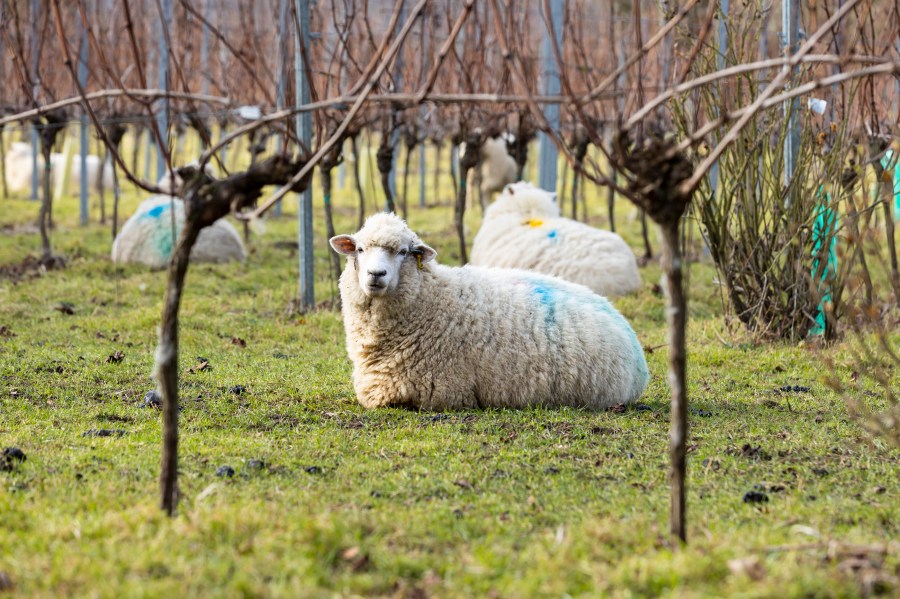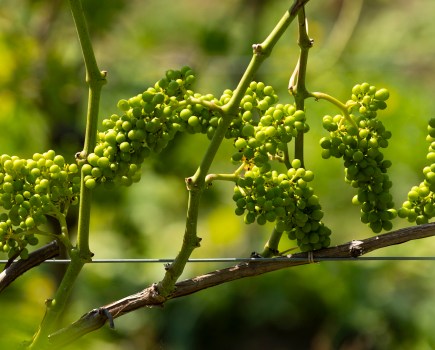Stephen Skelton’s excellent article in the December 2024 edition of this magazine raised important questions about regenerative viticulture – its definition, its impact, and the potential risks of greenwashing.
The Regenerative Viticulture Foundation (RVF) exists to support producers in transitioning towards regenerative practices, and we welcome the opportunity to provide further clarity on what regenerative viticulture is (and isn’t), why it matters, and how it can be applied effectively in UK vineyards.
Why regenerative viticulture?
Regenerative viticulture is a science-led approach that works with nature to improve vineyard health, climate resilience, and biodiversity. Unlike organic or biodynamic certifications, regenerative viticulture is not a prescriptive set of rules but a principles-based framework that allows growers to tailor practices to their specific environments.
Stephen pointed out that regenerative viticulture is sometimes used as a marketing term without clear parameters. We agree that defining regenerative viticulture is critical, but also that its application may vary depending on context, which is why we base our understanding on peer-reviewed science, practical application, and measurable outcomes wherever possible. In an era of rising input costs and unpredictable weather, regenerative viticulture offers economic and ecological benefits, improving soil health and reducing reliance on external inputs.
What is regenerative viticulture?
While there is no universal legal standard, the RVF has identified 16 key practices specific to viticulture, built on the widely recognised five principles of regenerative agriculture.
These 16 practices focus on:
- Maximising soil health through minimal disturbance and organic matter inputs.
- Encouraging biodiversity by integrating hedgerows, cover crops, and natural pest management.
- Reducing chemical reliance without compromising vine health or yield.
- Improving carbon sequestration through healthy soils and plant systems.
- Enhancing vineyard resilience to climate extremes and disease pressures.
Regenerative practices adapt to local conditions – a key advantage for UK growers working with a cool, maritime climate.

Greenwashing risk – certification vs mindset
Stephen raised a valid concern: could regenerative viticulture become another buzzword, applied without substance? Absolutely – but only if it is misused. At RVF, we believe that the best way to prevent greenwashing is by focusing on measurable improvements and transparent peer-to-peer engagement.
We remain agnostic on certification because regeneration is a continuous process, and we support growers at all points on that journey. That said, certifications can play a role in providing transparency and market access. Some distributors already require regenerative certification, and frameworks like Regenerative Organic Certified (ROC) are emerging, some of which require organic standards, and others which are specific to viticulture or certain environments. However, for most growers, demonstrating progress through real data – such as soil organic matter levels and biodiversity improvements – is more meaningful than a label alone.
Key regenerative practices in the UK
Stephen questioned whether regenerative methods, particularly cover crops and livestock integration, are truly viable in UK viticulture. In reality, the UK’s unique climate makes certain regenerative practices especially effective.
1. Year-round ground cover and undervine management
Unlike many warmer regions, UK vineyards can maintain 100% ground cover year-round. Carefully selected cover crops reduce reliance on synthetic fertilisers, improve soil structure, and enhance biodiversity. Tractor-mounted strimmers and techniques like ‘mow and throw’ (using side discharge mowers to suppress undervine weeds) can reduce the need for herbicides.
Stephen points out that the UK has a high degree of fungal disease pressure, but regenerative practices differ from organic ones in that ‘regen’ balances the competing pressures and is flexible if a producer decides that, in extreme circumstances, one systemic application is less damaging to their soils than multiple copper applications. The same flexibility applies to the herbicide versus ‘no-till’ debate. While this flexibility in turn can add confusion, it also allows producers to adapt their practices to their specific circumstances, while gradually moving towards more widespread adoption of as deep an interpretation of ‘regen’ as possible.
2. Livestock integration
Sheep in vineyards? It’s not just a trend – it’s a proven way to reduce mowing costs, improve soil fertility, and support biodiversity. While high-trellising for year-round grazing may not yet be common in the UK, rotational grazing post-harvest is growing in popularity. Stephen knows from experience how managing sheep in vineyards has some downsides, and takes experience and skill to manage, but support with this is available: the Pasture for Life programme is actively exploring how to connect vineyards with livestock farmers.
3. Agroforestry and windbreaks
UK vineyards have long used hedgerows and windbreaks – but new agroforestry approaches go further, integrating trees and shrubs within vineyard blocks to improve water retention, create habitat for beneficial species, and support mycorrhizal fungal networks. Sustainable Farming Incentives (SFIs) offer payments for hedgerow planting, making this an economically viable approach.
Who is the RVF?
The Regenerative Viticulture Foundation (RVF) is a global non-profit dedicated to supporting growers in their transition to regenerative practices. While our scope is international, our UK team and trustees ensure that our research, guidance, and community initiatives are directly relevant to British vineyards.
How to get involved
- Events and workshops – RVF is hosting a one-day Regenerative Viticulture Workshop in collaboration with WineGB (subject to ticket availability). Several open farm visits will also be held throughout the year. Sign up to the RVF mailing list to be kept informed.
- Training and networking – Trustee Justin Howard-Sneyd runs a two-day Introduction to RV course at West Dean annually. (www.westdean.ac.uk/short-courses/s2d35871-introduction-to-regenerative-viticulture). There is also an active WhatsApp group for growers trialling regenerative practices.
- Resources and guidance – Sign up for the RVF newsletter for updates on new guides, research, and vineyard trials.
Conclusion
Regenerative viticulture is not about ideology, but about practical, evidence-based solutions. Stephen Skelton’s concerns about clarity and accountability are well-placed, and we agree that meaningful data and transparency must guide this movement forward. The RVF remains committed to supporting UK growers with real knowledge, practical tools, and a thriving community – helping to ensure that regenerative viticulture is more than just a trend, but a lasting shift towards healthier vineyards and a more resilient wine industry.
Literature review on regenerative practices
A recent RVF and NIAB study published in Oeno One analysed scientific evidence on regenerative viticulture. Key findings include:
- Compost application boosts soil nutrients, improves water retention, and enhances grape yields.
- No-till farming increases soil carbon sequestration.
- Cover crops improve soil structure, reduce compaction, and enhance biodiversity. They also provide cooling effects, which may be beneficial as climate patterns shift.
- Natural predators such as bats and birds contribute to vineyard pest control. Sheep and geese help manage weeds while reducing soil compaction compared to tractors.
While many regenerative practices are well-supported by research, further studies are needed to assess bio-stimulants, biological control agents, and their long-term impact on wine quality.




